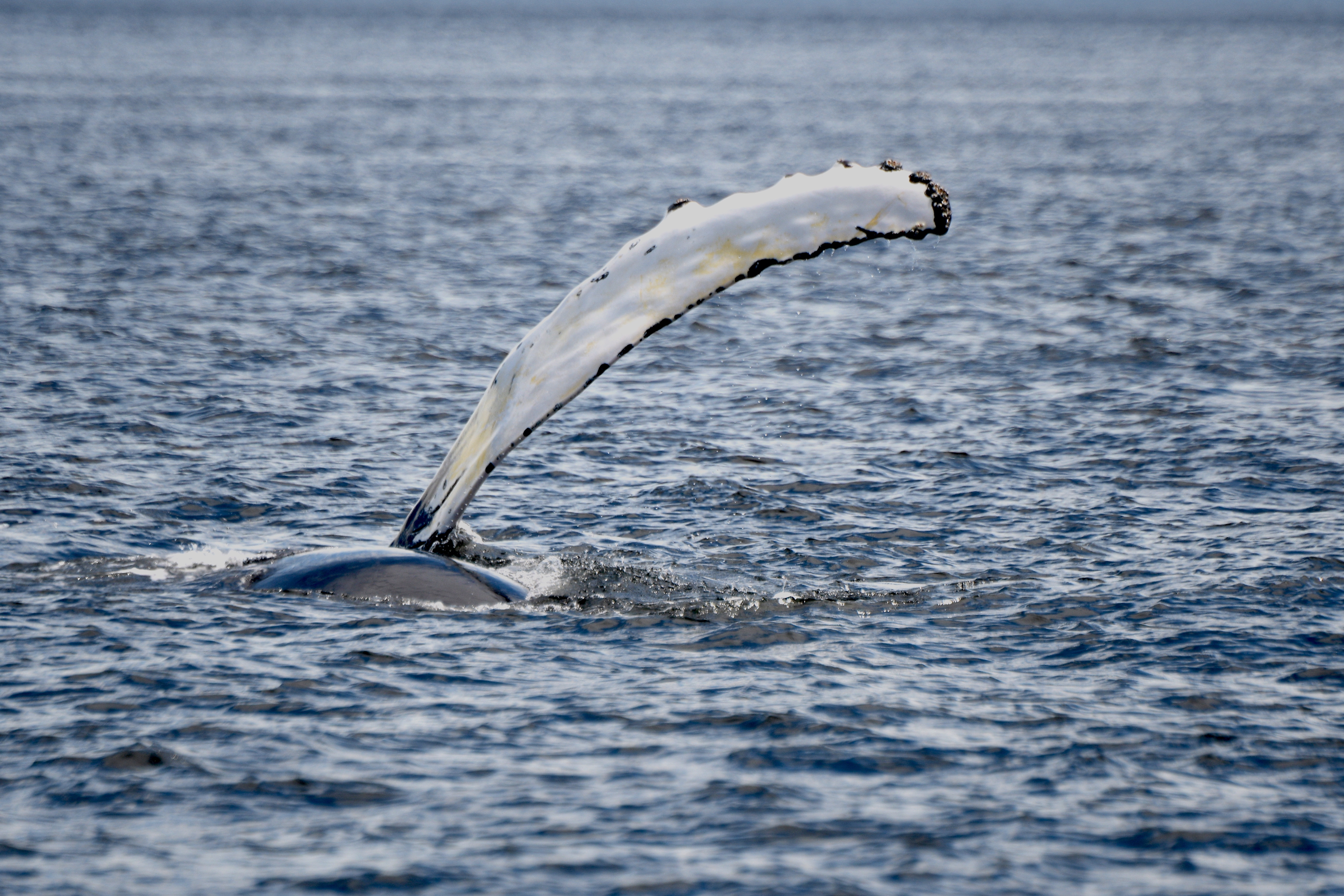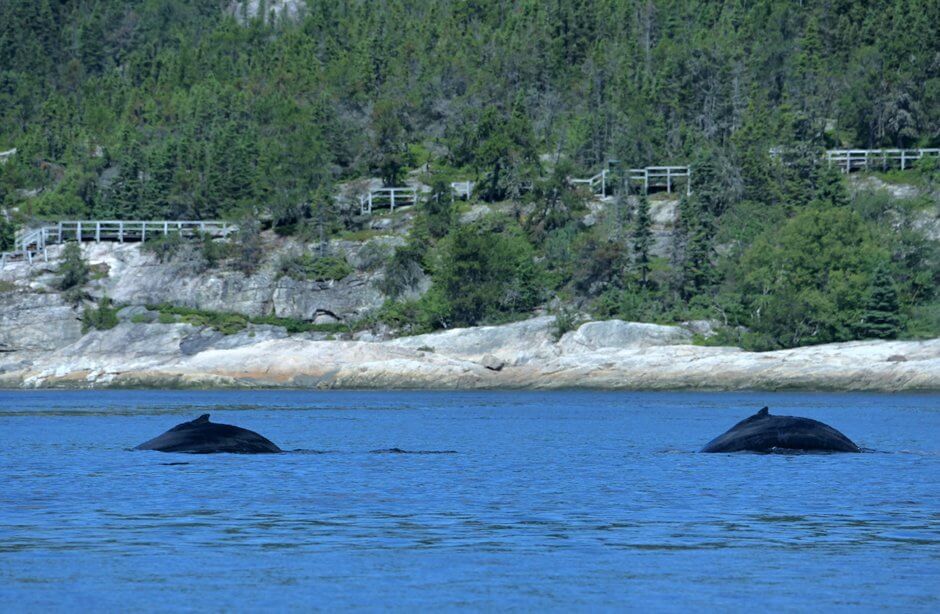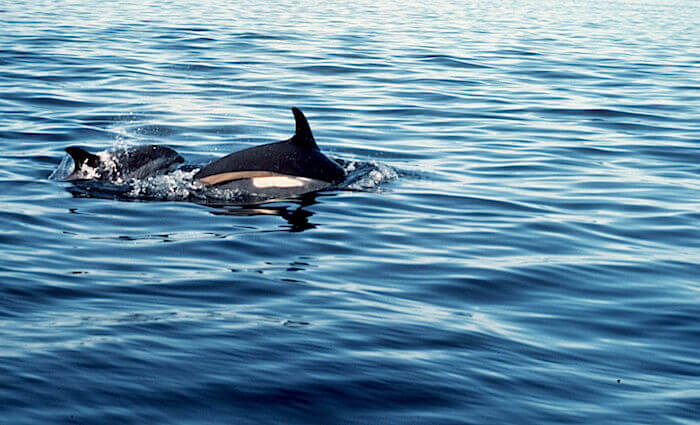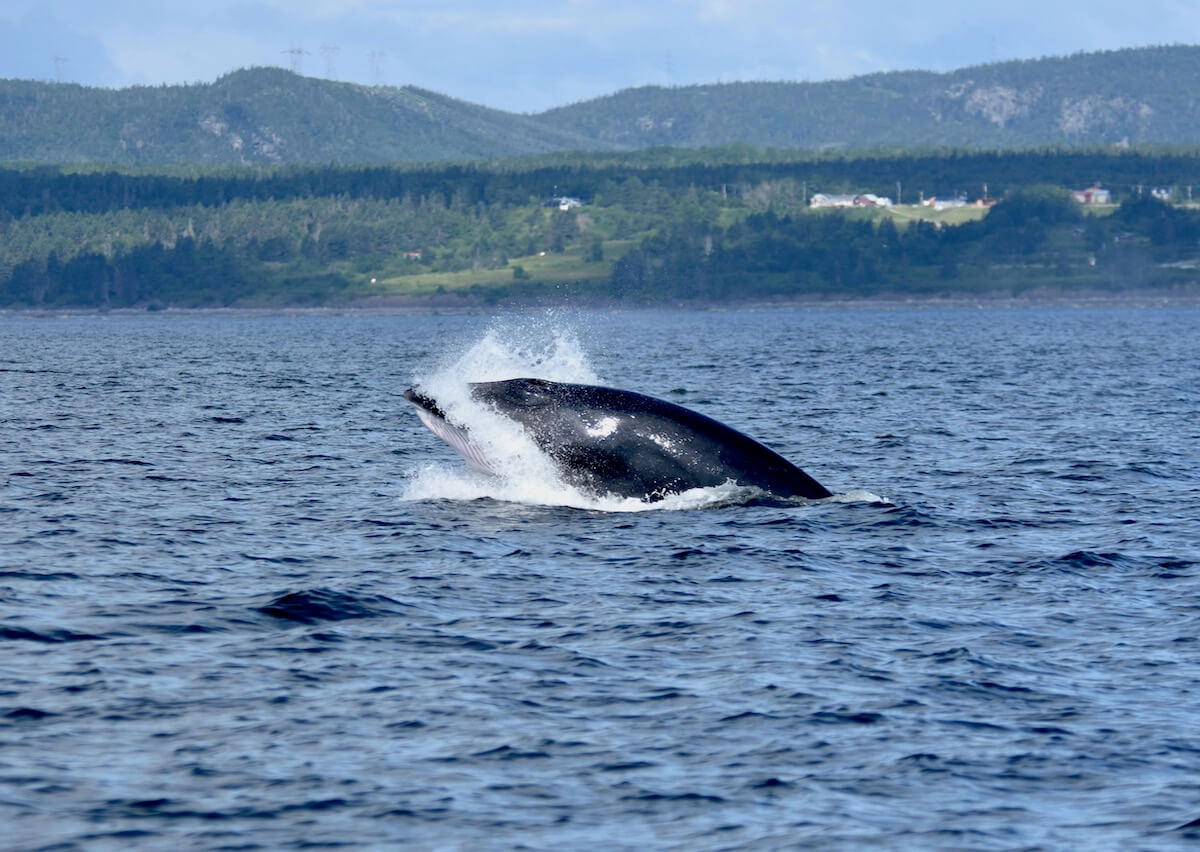After the pioneering belugas that ventured into Baie des Ha! Ha! last week, this week it is the humpbacks’ turn to make headlines for their adventures. After visiting the mouth of the Saguenay, they proceeded to swim up the fjord, reaching and even going beyond Île Saint-Louis on Friday, July 22!
Naturalist and wildlife photographer Renaud Pintiaux was on the water and had the chance to follow them almost the entire day. “Pectoral fins lifted into the air and slapping the surface,” he writes, describing the whales’ behaviour in the brackish waters of the fjord. And that’s not all: there were some incredible breaches throughout the day. Then, at around 8 o’clock that evening, they headed back to the mouth of the Saguenay.
On Sunday, July 24, three of these incredible baleen whales also showed the tips of their dorsal and caudal fins… at Cap-à-l’Aigle in La Malbaie! “We’ve been seeing minke whales and harbour seals often this year,” says a recreational boater. “I’ve seen large blasts on a few occasions, but these are definitely those of humpbacks. They were so close you could even see them from the marina.” A few porpoises are also roaming nearby, and a single beluga was spotted offshore.
Whale “escort”
In Franquelin, the presence of three humpbacks was also reported on July 24. As they swam close to the shore, they were surrounded by around 15 minke whales and about 100 harbour porpoises. “It looked as if the humpbacks were being escorted… there must have been an awful lot of food there!” exclaims one marine mammal enthusiast.
If we gradually follow the whale trail eastward, sightings have been every bit as interesting. Near Godbout, two humpbacks were observed striking the water surface with their tail fins. In Gallix, a minke whale was spotted at close range by a kayaker. Seals were seen in Sheldrake, feeding about a hundred meters from the shore of Anse à Ernest. And in Blanc-Sablon, a few killer whales were observed from the Bella Desgagnés. Indeed, the largest member of the dolphin family is sometimes present in the Gulf of St. Lawrence, though sightings are rare. In the North Atlantic, killer whales seem to be few in number and very scattered. They can be recognized by the large dorsal fin located in the middle of their back.
However, they are not the only dolphins to have been observed this week! On the other side of the Gulf of St. Lawrence, in Gaspésie, the first Atlantic white-sided dolphins of the season were reported. These fast swimmers were spotted in Gaspé Bay. A few humpbacks, minke whales, harbour porpoises and grey seals have also been frequenting the area. Reports have also come in from Penouille of a possible basking shark, not to mention large numbers of lion’s mane jellyfish.
Movement in the estuary
While breaching minke whales have been observed at Grande Vallée, others have been reported from Tadoussac. Additionally, a few individuals of this species have been feeding in Baie-Sainte-Catherine. “I often see two minke whales surface feeding at low tide just off the docks in Baie-Sainte-Catherine,” says one cetacean enthusiast. “Always in the same place, west of Pointe-aux-Alouettes. Also at low tide, about fifty seals were basking on the rocks for a good two hours.”
In Les Escoumins, a few humpbacks, minke whales, harbour porpoises and grey seals are regularly observed. And let’s not forget the belugas plying the waters of the Saguenay between Baie-Saint-Marguerite in Sacré-Coeurand Pointe-Noire in Baie-Sainte-Catherine.
Where are the Whales this week? Map of the observations of the week.
Here is the map of observations reported this week. It gives an idea of the presence of whales and does not at all represent the actual distribution of whales in the St. Lawrence. Use it for fun!
A tightly knit network of experienced observers who live according to the rhythm of the St. Lawrence throughout the year. On the waves or on shore, they scan the horizon with passion and patience, watching for the slightest spout. It is thanks to their sharp eyes and living words that we are able to write News from Afield week in and week out. A big thank you to all of our precious collaborators!
Click on the whale or the seal icon to find out more about the corresponding observation (species, number of individuals, info, pictures). To enlarge the map, click on the top right corner icon.
Vous souhaitez partager vos observations et contribuer à la science citoyenne? Utiliser l’outil de saisie d’observations de mammifères marins.








